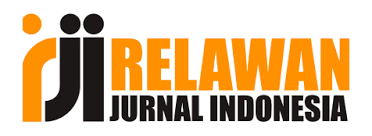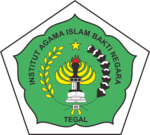Sufi Healing dan Neuro Linguistic Programming: Studi Terapi pada Griya Sehat Syafaat (GRISS) 99 Semarang
DOI:
https://doi.org/10.62490/latahzan.v11i2.397Keywords:
Sufi healing, riyāḍah & mujāhadah, sufistic values, NLPAbstract
This study is about Sufi healing, which focuses on behaviors related to Sufi healing in the prevention of diseases, both physically and non-physically caused by various problems faced by humans. According to the Sufi perspective, the problem is rooted in the heart. Therefore, healing is emphasized in the health of the heart, through takhall?, ta?all? and tajall? with training (riy??ah) and earnest (muj?hadah) by the murshid or therapist. In this process, therapists use Neuro Linguistic Programming (NLP) as a technique to facilitate the incorporation of Sufi values. This type of research is qualitative. The method of analysis uses descriptive-qualitative. data sourced from GRISS 99 Semarang. The results of this study are the application of the NLP technique as a Sufi healing technique that aims to purify the soul, through takhall?, ta?all? and tajall?, as the key to meaningfulness of life.
References
Ali-Shah, Omar, Tasawuf Sebagai Terapi, (Bandung: Pustaka Hidayah, 2002).
Allen, James, As A Man Thinketh With An Introduction by Tony Nutley, (UKCPD Press, 2008).
Amrullah, Amstrong, Khazanah Istilah Sufi, Kunci Memahami Tasawuf, terj. MS. Nasruallah & Ahmad Baiquni, (Bandung: Mizan, 2002).
An-Najr, Amir, Psikoterapi Sufistik dalam Kehidupan Modern, (Bandung: Mizan Publika, 2004).
Anshori, Subhan, Tasawuf dan Revolusi Sosial, (Kediri: Pustaka Azhar, 2011).
Asmaran, Pengantar Studi Tasawuf, (Jakarta: Raja Grafindo Persada, 1994).
Bavister, Steve & Amanda Vickers, NLP for Personal Succes, terj: Teguh Wahyu Utomo (Yogyakarta: Baca, 2004).
Casale, Pete, NLP Secrets: Upgrade Your Mind, (New Zeland: Media NZ, 2012).
Chopra, Depak. Quantum Healing, (New York: Bantam Books, 1989).
Departemen Agama RI, Alqur’an dan Terjemahannya, (Jakarta: Darussunnah, 2012).
Graha Masyarakat Ilmiah Kedokteran (GRAMIK) UNAIR, Psikoneuroimunologi Kedokteran, (Surabaya: 2005).
al-Ghazali Ihya ‘Ulum al-din, Jilid III (Mesir: Isa al-Halabi, 1968).
al-Ghazali, Ihya Ulum Al-Din, Juz 8, (Beirut : Dar al-Fikr, 1980).
al-Ghazali, Ihya Ulumuddin, terj: Ibnu Ibrahim, (Jakarta: Republika, 2012).
al-Ghazali, Mukasyafatul Qulub, terj. Irwan Kurniawan (UjungBerung: Marja’, 2003).
H.R Bukhori Muslim no.52 dan Muslim No. 1599.
Hawwa, Sa’id, Tazkiyatun Nafs, terj: Abdul Amin dkk, (Jakarta: Pena Pundi Aksara, 2006).
Hembing, Wijayakusuma dkk, Penyembuhan Melalui Do’a, (Jakarta: Toko Gunung Agung, 2003).
Hidayat, Bahril, “Aplikasi Psikoterapi Neuro Linguistic Programming (NLP) dengan Intensifikasi Modalitas Positif Individu Berupa Perilaku Beribadah Terhadap Penyembuhan Gangguan Trauma”, Jurnal Fakultas Psikologi, Vol. 5, No. 2, (2009).
Inayat Khan, Hazrat . The Heart of Sufism, Alih bahasa: Andi Haryadi, (Bandung: Remaja Rosdakarya, 2002).
Jamil, M, Cakrawala Tasawuf: Sejarah Pemikiran dan Kontekstualitas, (Jakarta: Gaung Persada Press, 2004). An-Najr, Amir, Ilmu Jiwa dalam Tasawuf: Study Komparatif dengan Ilmu Jiwa Komputer, terj. Hasan Abrori, (Jakarta: Pustaka Azan, tt).
Liputan 6, “Selesaikan Masalah Jiwa dengan Seni Penyembuhan Sufi,” diakses 20 Desember 2018, http://www.gogle.com/amp/s/m.liputan6.com
Moh, Saifullah, Al-Aziz, A. Risalah Memamahi Ilmu Tasawuf,(Surabaya: Terbit Terang, 1998).
Moinuddin Chishti, Shaykh Hakim The Book of Sufi Healing, (New York: Iner Traditions International, 1985).
Monty, P. Satiadarma, Terapi Musik, (Jakarta: Melenia Populer, 2002).
Muhaya, Abdul, Pola Hubungan antara Tasawuf dan Psikoneuroimunologi, (Laporan hasil Penelitian IAIN Walisongo Semarang, 2006).
Nasution, Harun. Filsafat dan Mistisme dalam Islam, (Jakarta: Bulan Bintang: 1995).
O’riordan, The Art of Sufi Helaing, , (USA: M.T.O, Shahmaghsoudi Publictions, 1999).
Pedak, Mustamir. Qur’anic Super Healing,(Semarang, Pustaka Nuun, 2010).
al-Qusyairi, Risalah Qusyairiyah, terj: Uamr Faruq, (Jakarta: Pustaka Amani, 2013).
Rakhmat, Jalaludin, The Road to Allah, (Bandung: Mizan, 2007).
Sailendra, Annie. Amazing NLP, Neuro Linguistic Programming dari Konsep hingga Teknik, (Yogyakarta: Bhafana Publishing, 2017).
Salami, “Implementing Neuro Linguistic Programming (NLP) In Changing Student’s Behavior: Research Done At Islamic Universities Aceh”, International Multidisiplinary Journal, Vol. 3, No. 2, (2015).
Sentanu, Erbe. Quanutm Ikhlas: Teknologi Aktivasi Kekuatan Hati, (Jakarta: Elex Media Komputindo, 2008).
Sulaiman, Sufi Healing: Penyembuhan Penyakit Lahiriah dan Batiniah, (Semarang: Karya Abadi Jaya, 2015).
Syukur, Amin, Sufi Healing, Terapi dengan Metode Tasawuf, (Jakarta: Erlangga, 2012).
al-Taftazani, Abu al-Wafa’ Al-Ghanimi. Sufi dari Zaman ke Zaman, (Bandung: Pustaka, 1997).
Verhar, J.M.W, Asas-asas Linguistik Umum, (Yogyakarta: Gadjah Mada University Press, 1996).
Waslah, “Peran Ajaran Tasawuf sebgai Psikoterapi Mengatasi Konflik Batin”, Jurnal At-Turats, Vol. 11, No. 2, (2017).
Watiimena, David & Priatno H. Martokoesomo, SPIRITUAL HAPPINESS (7 Kunci Menemukan Kebahagiaan Hidup dengan Metode NLP dan Tasawuf), (Bandung: Mizan Pustaka, 2016).
Widyatmoko, Wahyu. dkk, Neuro-Linguistic Programminh dalam Layanan Konseling, Jurnal Bimbingan dan Konseling, Volume 1, Nomor 1, 2017.
Yucel, Salih. Positive Thinking and Action in Islam: Case Studies from The Sirah of Prophet Muhammad. International Journal of Humanities and Social Science, Volume 5, Nomor 1 Januari, 2015.
Downloads
Published
How to Cite
Issue
Section
License
Copyright (c) 2019 La-Tahzan: Jurnal Pendidikan Islam

This work is licensed under a Creative Commons Attribution-ShareAlike 4.0 International License.
The copyright of the received article shall be assigned to the journal as the publisher of the journal. The intended copyright includes the right to publish the article in various forms (including reprints). The journal maintains the publishing rights to the published articles.
In line with the license, authors and any users (readers and other researchers) are allowed to share and adapt the material. In addition, the material must be given appropriate credit, provided with a link to the license, and indicated if changes were made. If authors remix, transform, or build upon the material, authors must distribute their contributions under the same license as the original.
















